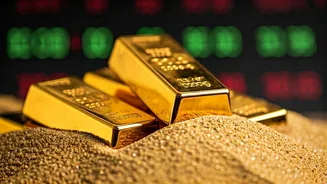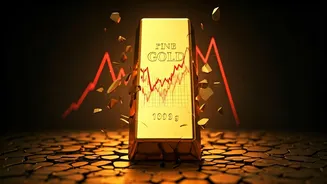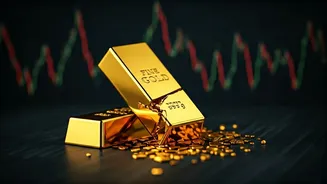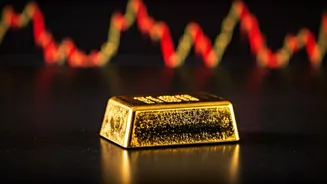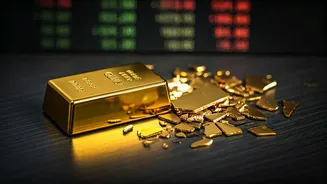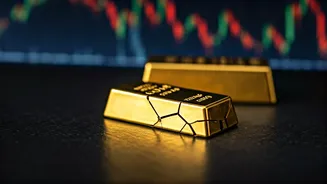Initial Winning Streak
For a duration spanning nine weeks, the price of gold had been consistently increasing, capturing the attention of both investors and analysts. This upward
trajectory was fuelled by various factors, including global economic uncertainties, fluctuations in currency values, and shifts in investor sentiment. The sustained rise in gold prices during this period underscored its perceived role as a safe-haven asset, especially amidst global financial volatility. This steady appreciation indicated robust demand for gold, as individuals sought to protect their assets from economic instability. The market dynamics during these weeks painted a picture of gold's resilience and enduring appeal as a store of value. Furthermore, this winning streak attracted new investors and prompted existing ones to bolster their holdings. The performance of gold during this time reflected its ability to withstand external pressures and maintain its attractiveness as an investment vehicle. These developments set the stage for the subsequent market changes.
Factors Behind the Fall
The recent decline in gold prices after a nine-week winning streak can be attributed to several critical factors. One of the primary drivers is the strength of the US dollar, as an inverse relationship often exists between the dollar's value and gold prices. When the dollar appreciates, gold becomes more expensive for buyers holding other currencies, which can decrease demand and subsequently lower prices. Simultaneously, expectations of changes in monetary policy, such as interest rate decisions by central banks, heavily influence gold's performance. Anticipation of higher interest rates can diminish the attractiveness of non-yielding assets like gold, further pressuring prices downwards. Moreover, shifts in investor sentiment play a key role, with any decline in perceived economic risks diminishing the need for safe-haven assets such as gold. Overall, a combination of these elements has contributed to the recent dip in gold prices.
Impact on Investors
The fall in gold prices following the extended winning streak has significant implications for investors. Those who bought gold during the period of rising prices might experience a short-term reduction in the value of their holdings. This downturn underscores the inherent volatility of the market, reinforcing the importance of a well-diversified investment portfolio and risk management strategies. Investors should consider their individual financial goals, risk tolerance, and investment time horizons when assessing their portfolios. During such times, it’s beneficial to evaluate if current market conditions align with their long-term objectives. It is essential to avoid making impulsive decisions and to instead rely on a thorough evaluation of the underlying market trends and personal financial circumstances. Furthermore, the dip could present an opportunity for some investors, particularly those with a long-term outlook, to acquire gold at potentially lower prices.
Market Dynamics Explained
Understanding the intricacies of the gold market is crucial for investors navigating recent price shifts. The supply and demand dynamics, influenced by production levels, consumer demand, and investment activities, determine gold prices. Political and economic events, global conflicts, and currency fluctuations further impact gold's pricing. Economic indicators, such as inflation rates, employment data, and GDP growth, have a significant bearing on market sentiments and the decisions of investors. Gold's role as a safe-haven asset usually causes its price to increase during times of heightened uncertainty, thus underlining its relevance during unpredictable periods. The interplay of these forces creates a complex market environment in which various factors affect the price movements.
Future Outlook for Gold
Predicting the future trajectory of gold prices involves examining several potential scenarios and their underlying drivers. The influence of upcoming monetary policy decisions by central banks, especially the US Federal Reserve, will be crucial. Any indications of interest rate adjustments could significantly affect gold's valuation. Economic data releases, including inflation reports and employment figures, will provide insights into the overall health of the global economy, directly influencing investor sentiment towards safe-haven assets like gold. Geopolitical events and global economic uncertainties may also drive demand for gold as a hedge against risk. The continued developments in these areas will determine gold’s performance and the general outlook in the market. Considering these diverse factors and their potential impact is essential for informed investment decisions.


